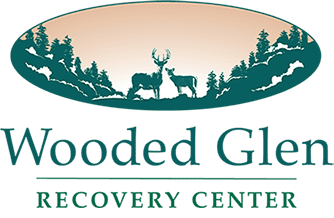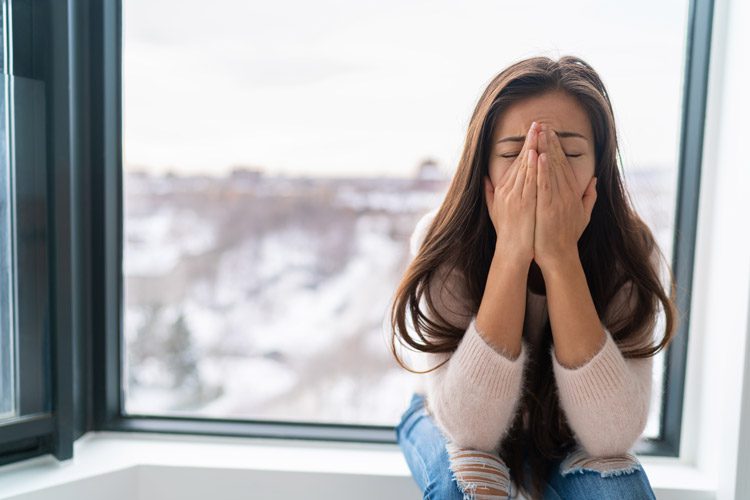It is probably fair to say that no season of the year is easy for a person in recovery. Maintaining your sobriety is a daily challenge. Some days will be easier than others, but sobriety is an ongoing commitment—and the world is full of things that can unexpectedly pop up and threaten that sobriety. Those threats do not confine themselves to a single portion of the calendar.
Winter Weather
That said, the winter months can prove more difficult for some people—whether they are in recovery or not. For some, wintertime just seems filled with additional challenges: the extra time indoors due to colder temperatures, the rushing around of the holiday season, the added time necessary to run the simplest of errands because of all of the bundling up and tricky road conditions, and more.
These sorts of winter annoyances are pretty common, and it is only natural that they would lead to some added stress or sadness. But for some people, the problem goes deeper than the occasional case of the winter blues. The symptoms of seasonal affective disorder (cleverly abbreviated: SAD) can make winter especially tough for some people. In fact, this mental health disorder can undermine your ongoing recovery if it goes unchecked.
But what can you do about seasonal affective disorder? Let’s take a look at your options for spending the winter with more happy and less SAD.
A Quick Reminder: Sad and SAD are not the Same
Before we go any further, we want to reemphasize an important point. Everyone feels sad from time to time. If you are experiencing some sadness in your life, it does not necessarily mean you have developed a mental health disorder. Quite the contrary, in fact.
That said, it is important to keep an eye on how you are feeling. If the sadness never seems to abate or does not seem attached to anything in particular in your life–or if you have already been diagnosed with, for example, major depressive disorder—a conversation with your physician or therapist is probably in order.
Causes and Symptoms of SAD
Seasonal affective disorder is more than simple sadness. SAD may develop as a result of several related factors. Those factors may include:
- A reduction in serotonin levels in the brain as a result of less exposure to sunlight due to colder temperatures and shorter days.
- A shortage of Vitamin D in the body—which can also be due to a lack of exposure to sunlight.
- An increase in levels of melatonin in the brain, which engenders a desire for more sleep and a general feeling of having less overall energy.
So, less serotonin, less Vitamin D, and more melatonin. What does this combination of factors bring? The symptoms of SAD may include:
- Significant difficulty concentrating
- Excessive sleeping—and low energy even when awake
- Craving carbs—which may lead to overeating and weight gain
- Increased levels of anxiety or feelings of hopelessness
If you are in recovery, you may find that as SAD causes feelings of depression to deepen, you experience stronger and more frequent cravings for drugs or alcohol. The temptation to “self-medicate” may be very strong, indeed. That is why it is so important to find a way to manage the symptoms of SAD before they upend your hard-won sobriety.
And the first step to managing SAD may be shining a little light on the subject (in this case, the subject in question is you!).
Brighten Things Up to Tamp Down SAD
We get it: It is colder. And it is darker. Trying to get sunlight in the winter may sound like a drag.
Still, if you can convince yourself to bundle up and get outside—even for as little as 10 minutes—the added exposure to sunlight can make a big difference. A brisk walk also offers the mental health benefits that come with exercise, so this is a two-for-one solution for boosting your mental health.
But maybe you just can’t convince yourself to face the cold. You can still get access to more natural light by throwing open all the curtains, blinds, and shades in your house or office space. You might also invest in a light box that can provide you with simulated sunlight inside your home. These small, bright lamps are specifically designed to help counteract the symptoms of seasonal affective disorder.
Other Ideas for Keeping SAD at Bay
In addition to getting more light so that your body takes in more Vitamin D, it may be helpful to take supplements or to make changes in your diet so that your food provides more of the vitamin. Fish, pork, fortified yogurts, juices, milk, and cereals as well as hard boiled eggs and mushrooms can all be good sources of Vitamin D. And this is another two-for-one solution because good nutrition provides excellent support for your ongoing recovery.
Another option for battling SAD may be working with a therapist to develop strategies for managing the recurring negative thought patterns the disorder may reinforce. And in some cases—if your doctor and/or therapist do not think it will be a risk to your ongoing sobriety—an antidepressant can be a helpful tool for managing symptoms of SAD.
Your Recovery Starts Here
At Wooded Glen Recovery Center, we have the expertise and compassion necessary to help you start your recovery journey with confidence. Let us help you reclaim your life.

